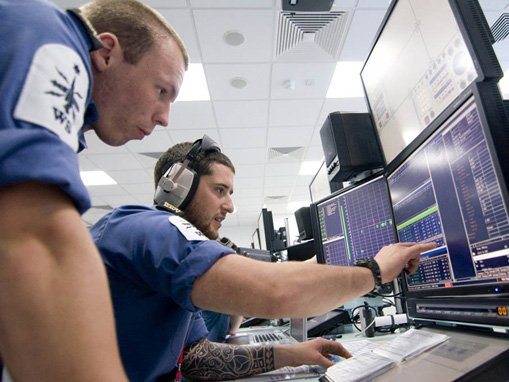The Royal Navy has today unveiled its new state-of-the-art warfare training facility which will ensure its next generation of sailors are among the best prepared in the world.
Representing the most radical change to its training for over 40 years, the Maritime Composite Training System (MCTS) provides shore-based training for warfare teams.
It allows crews to prepare for service on the latest Type 45 destroyers, as well as Type 23 frigates, Type 42 destroyers, assault ships and carriers.
Based across two sites at Fareham and Plymouth, the MCTS features banks of flat-panel LCD screens faithfully replicating equipment used at sea.
The system will be used by around 1,000 new trainees a year and will allow existing personnel to maintain their warfare skills.
Peter Luff, Minister for Defence Equipment, Support and Technology, said:
“This new £108m training system represents a groundbreaking move for the Royal Navy that will enhance its training capability for the future.
“It will enable personnel to train to the highest standard, utilising the latest technological developments.
“With this system, the UK’s sailors will be some of the best prepared in the world, ready to take on the challenges of the future.”
The MCTS was procured by the Training, Stores and Boats Team at the MOD’s Defence Equipment and Support organisation and replaces earlier training facilities. The two MCTS sites are nearly 200 miles (322km) apart but are connected by a fibre optic link.
At HMS Collingwood in Fareham, Hampshire, there are three reconfigurable Warfare Team Trainers (WTTs) and eight Electronic Classroom Trainers (ECTs), with a similar facility at Devonport in Plymouth consisting of two WTTs and one ECT.
Chief of Defence Materiel, Bernard Gray, added:
“This state-of-the-art system will greatly increase the effectiveness of surface ship warfare training.
“It represents the MOD’s commitment to delivering the best equipment for training and simulation required by the modern Royal Navy.
“With its ability to replicate all the current destroyers, frigates and capital ships in the fleet, the Maritime Composite Training System provides great flexibility.”
Commodore Tim Lowe, from the Maritime Warfare School at HMS Collingwood, said:
“Today, with the Maritime Composite Training System, we have moved to the next stage; some would call it a training revolution and in our training delivery we now have the ability to train, deliver and employ maritime effect in a far better and a far more effective way than we have ever done before.”










